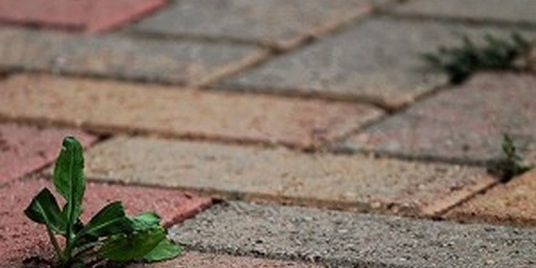
Having weeds come up in your beautiful paver patio is annoying, and is not ‘conducive’ to enjoying your favorite outdoor area. It gives your outdoor area an unkempt look. And it can often be difficult to remedy the situation, and no one wants to regularly pull weeds in their patio, of all places.
First, let’s look at the cause. Weeds start growing in the cracks of your paver patio when the joints are not properly filled with polymeric sand, or if that polymeric sand has weathered out of the joints over long periods of time. What happens is the joints fill up with dirt, and the weeds grow in the soil that has washed in the joints.
It is very important to use polymeric sand, and not regular sand. Polymeric sand is a product that has been on the market for quite a few years, and it drastically helps decrease the struggle; if installed properly. It comes in bags, and has polymeric bonding agents mixed in the sand that will harden the sand when the bonding agents are activated by wetting the sand after it is swept in the joints. You can find this sand at Tussey Mountain Mulch in Hollidaysburg Pa.
If you have weeds growing in your patio, the first thing we need to do is spray them with a weed killer, let them die, and then take a power washer and blast out the joints and remove all the dirt or old sand. After the pavers have completely dried, you will want to take new polymeric sand and sweep it into the joints, following all instructions on the bag. After you have the sand installed, the new polymeric sand will become very hard, and inhibit weed growth.
Like all things, this polymeric sand weathers, and for best results in preventing problems you can redo this procedure every 3-5 years. Weeds are crazy, sometimes even growing in blacktop. If you have a stubborn weed peek up here and there, the best way to deal with it is just hit it with weed killer. That will take care of it without disturbing the surface of the hardened polymeric sand. If you go digging in the sand with a tool to dig up the weed, it will only create a crevice for dirt to fill and be even more susceptible to weed growth.
